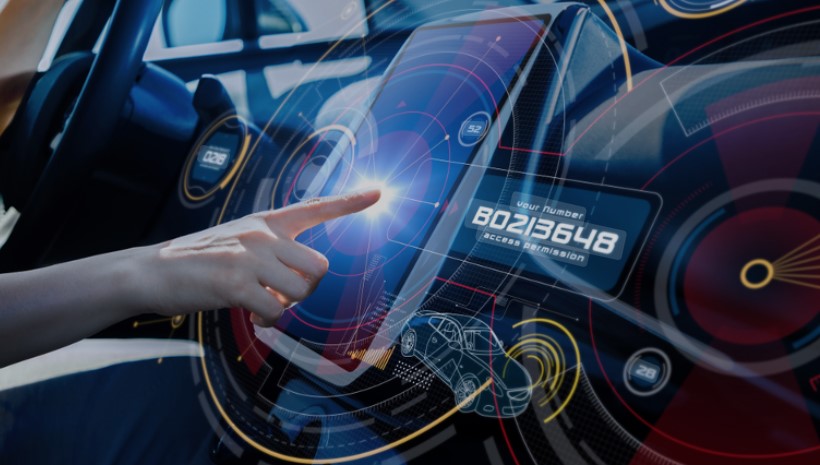The Internet of Things (IoT) in Cars: A Smarter Driving Experience
Introduction
The Internet of Things (IoT) is revolutionizing the automotive industry by enabling cars to become smarter, more connected, and more efficient. IoT in cars enhances safety, convenience, and performance through real-time data collection, cloud connectivity, and intelligent automation. This article explores how IoT is transforming modern vehicles, its key applications, benefits, challenges, and the future of smart driving.
1. How IoT Works in Cars
IoT in automobiles integrates sensors, software, and cloud computing to facilitate seamless communication between a vehicle and its environment.
• Embedded Sensors: Collect data on speed, engine performance, fuel consumption, and road conditions.
• Cloud Connectivity: Transmits and receives real-time information for navigation, diagnostics, and driver assistance.
• Vehicle-to-Everything (V2X) Communication: Enables cars to interact with other vehicles, infrastructure, and pedestrians for improved traffic management and safety.
2. Key Applications of IoT in Cars
IoT technology enhances various aspects of driving, from safety to entertainment.
a) Advanced Driver Assistance Systems (ADAS)
IoT supports ADAS features that improve road safety and driving convenience.
• Adaptive Cruise Control: Adjusts vehicle speed based on traffic flow.
• Lane Departure Warning: Alerts drivers when drifting out of a lane.
• Automatic Emergency Braking (AEB): Detects obstacles and applies brakes if needed.
• Blind Spot Monitoring: Uses sensors to warn drivers of unseen vehicles.
b) Smart Navigation and Real-Time Traffic Updates
IoT-driven GPS systems provide accurate, real-time navigation.
• Dynamic Route Optimization: Adjusts routes based on live traffic data.
• Predictive Navigation: Learns driving habits and suggests routes accordingly.
• Parking Assistance: Guides drivers to available parking spaces through IoT-enabled infrastructure.
c) Vehicle Health Monitoring and Predictive Maintenance
IoT enables real-time diagnostics and maintenance alerts.
• Engine and Battery Monitoring: Detects potential failures before they occur.
• Tire Pressure Monitoring Systems (TPMS): Alerts drivers about low tire pressure.
• Remote Vehicle Diagnostics: Sends maintenance updates to service centers.
d) In-Car Infotainment and Connectivity
IoT enhances the driving experience with entertainment and communication.
• Smart Voice Assistants: Allow hands-free control over navigation, music, and calls.
• Wireless Software Updates: Keeps vehicle systems up-to-date with the latest software.
• Personalized Settings: Adjusts seat positions, climate control, and audio preferences based on driver profiles.
e) IoT-Enabled Fleet Management
For businesses, IoT improves logistics and fleet management.
• Real-Time Vehicle Tracking: Monitors location and movement of fleet vehicles.
• Fuel Efficiency Optimization: Analyzes fuel consumption and suggests cost-saving measures.
• Driver Behavior Analysis: Tracks speed, braking patterns, and idle time to improve efficiency and safety.
3. Benefits of IoT in Cars
The integration of IoT offers numerous advantages to drivers, businesses, and the transportation industry.
• Enhanced Safety: IoT reduces accidents through ADAS and V2X communication.
• Improved Efficiency: Real-time monitoring optimizes fuel usage and reduces operational costs.
• Greater Convenience: Smart features enhance the driving and passenger experience.
• Predictive Maintenance: Reduces breakdowns and extends vehicle lifespan.
• Environmental Benefits: Optimized fuel consumption lowers carbon emissions.
4. Challenges of IoT in Automotive Industry
Despite its benefits, IoT in cars faces several challenges.
• Cybersecurity Risks: IoT-connected vehicles are vulnerable to hacking and data breaches.
• High Implementation Costs: Advanced IoT features require expensive hardware and infrastructure.
• Data Privacy Concerns: Protecting user data from unauthorized access remains a key issue.
• Connectivity Limitations: Poor network coverage can affect real-time data transmission.
5. The Future of IoT in Cars
The future of IoT in automobiles is driven by advancements in AI, 5G connectivity, and autonomous driving.
• Fully Autonomous Vehicles: IoT will play a critical role in self-driving technology.
• 5G-Powered Smart Cars: Faster communication for real-time decision-making.
• Integration with Smart Cities: Vehicles will seamlessly interact with urban infrastructure for efficient traffic management.
• Blockchain for Data Security: Enhanced cybersecurity measures to protect vehicle data.
Conclusion
IoT is revolutionizing the automotive industry by making cars smarter, safer, and more efficient. From real-time diagnostics to autonomous driving, IoT continues to enhance the driving experience. As technology evolves, IoT-enabled vehicles will play a significant role in shaping the future of transportation.



